AMD Radeon RX 7900 GRE partner card roundup — all the cards currently listed

AMD's 'new' trimmed-down RX 7900 GRE GPU officially went on sale in the U.S. today. The move to make the Radeon RX 7900 GRE globally available comes nearly one year after its release, ending its Chinese and 'OEM/pre-built-only' exclusivity. The 7900 GRE is now available in the U.S. starting at $549, slotting in between the RX 7800 XT and RX 7900 XT which are some of the best graphics gards for gaming.
For full details on the GPU itself and its performance, be sure to check out our review. Sapphire, PowerColor, Asus, Gigabyte, XFX, and ASRock have cards available and on sale right now, with MSI being the only brand so far that's missing the action. Here's the rundown of the various models.
Sapphire Technology
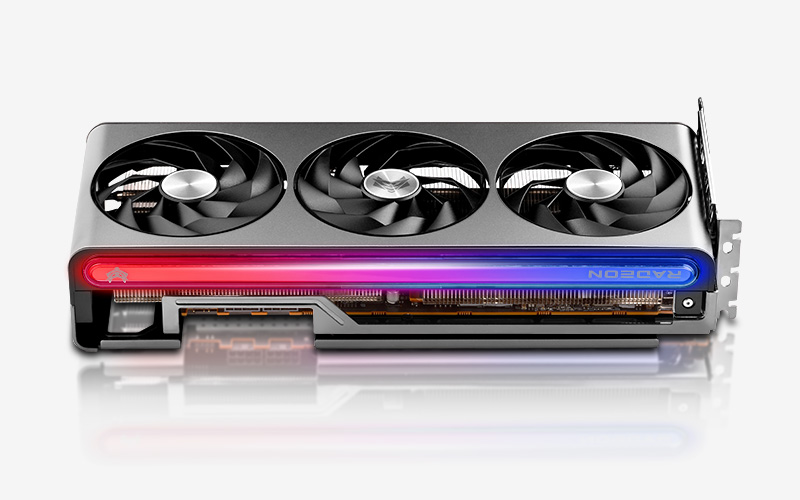

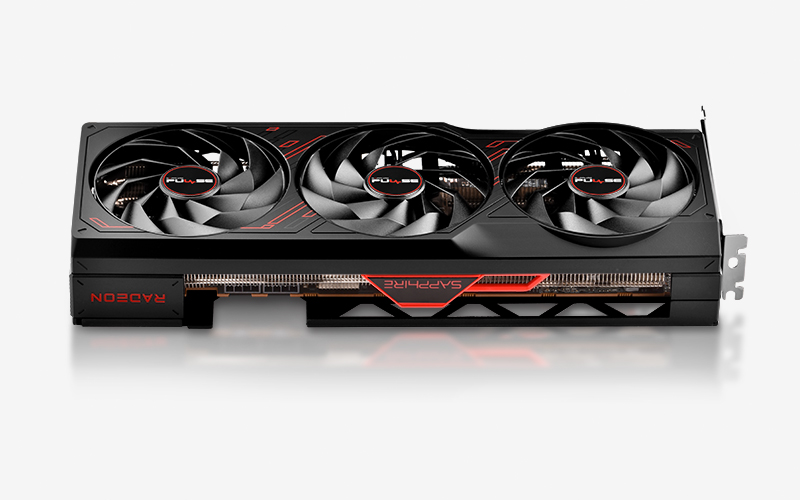
- Sapphire RX 7900 GRE Nitro+ for $579.99
- Sapphire RX 7900 GRE Pure for $559.99
- Sapphire RX 7900 GRE Pulse for $549.99
Sapphire has three RX 7900 GRE for sale, featuring flagship, mid-tier, and base-level SKUs. All of Sapphire's models sport lengthy triple-fan cooling solutions, with 2.5-slot or wider designs.
The Nitro+ variant is Sapphire's flagship model, sporting a triple-fan, triple-slot form factor, featuring Sapphire's Angular Velocity fin design and a 14-phase power delivery system. The card comes in a grey/dark silver finish, with a long RGB strip on top. The card requires three PCIe 8-pins for power and lists a boost clock of 2,391MHz.
The 7900 GRE Pure is Sapphire's mid-range SKU, featuring the same triple-fan configuration as the Nitro+ but in a slightly skinnier 2.5-slot design. The card features five composite heatpipes and a 14-layer TG copper PCB that is reportedly designed to meet the GPU's high current and "increased power" requirements. The Pure model comes in an all-white color scheme suited to white-themed builds. The shroud, fans, and backplate are all white, save for a red Sapphire logo on the side. Power is aided by two 8-pin supplementary power connectors and the GPU has a 2,333 MHz boost clock.
The Pulse is Sapphire's base-level RX 7900 GRE SKU, and the one we used for our initial review. Unlike most Pulse models in Sapphire's lineup, the RX 7900 GRE variant comes with a triple-fan cooling solution instead of a dual-fan solution. The card's form factor is very similar to the Pure, sporting the same 2.5-slot thickness. The Pulse features the sub-brand black and red color scheme, with a matte-black shroud accented by red. Power is provided through two 8-pins and the GPU boosts up to 2,290 MHz.
Gigabyte
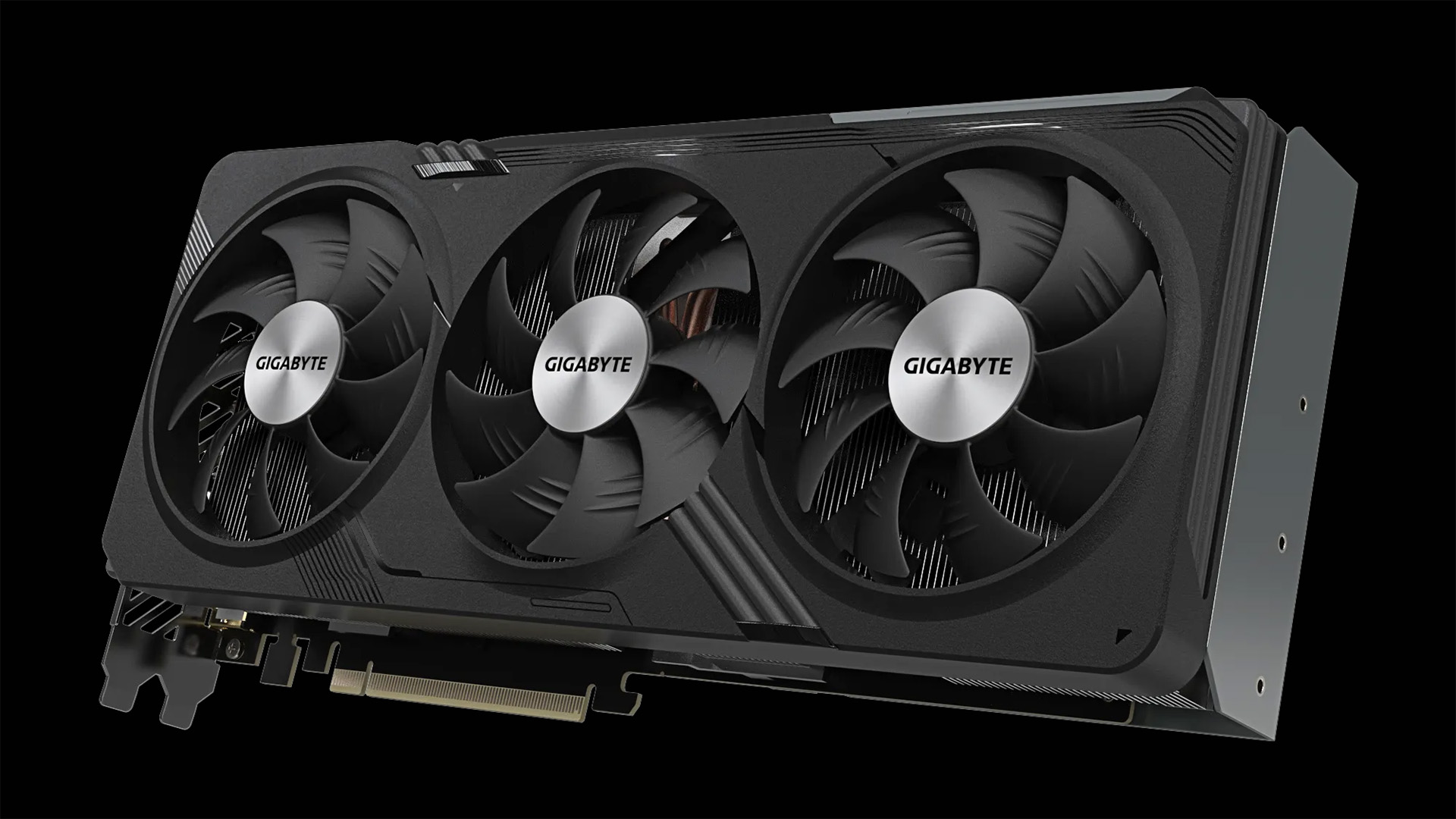
- Gigabyte RX 7900 GRE Gaming OC for $549.99
Gigabyte has just one RX 7900 GRE SKU for now, the RX 7900 GRE Gaming OC 16G. This model comes with a triple-fan cooler and sporting a matte black and silver color scheme. The card features Gigabyte's Windforce cooling system with the middle fan spinning in the opposite direction of the outer two fans.
One niche feature of the this model is its dual BIOS functionality. The card comes with two separate BIOS chips, one optimized for silent operation and the other for performance. Each BIOS is accessible via a switch on the side of the PCB. The extra BIOS is not only great for switching profiles but also adds an extra layer of reliability in case one of the BIOS chips fails (i.e. during a firmware update).
Power is supplied via dual 8-pin connectors and the GPU clocks up to 2,391MHz.
Asus
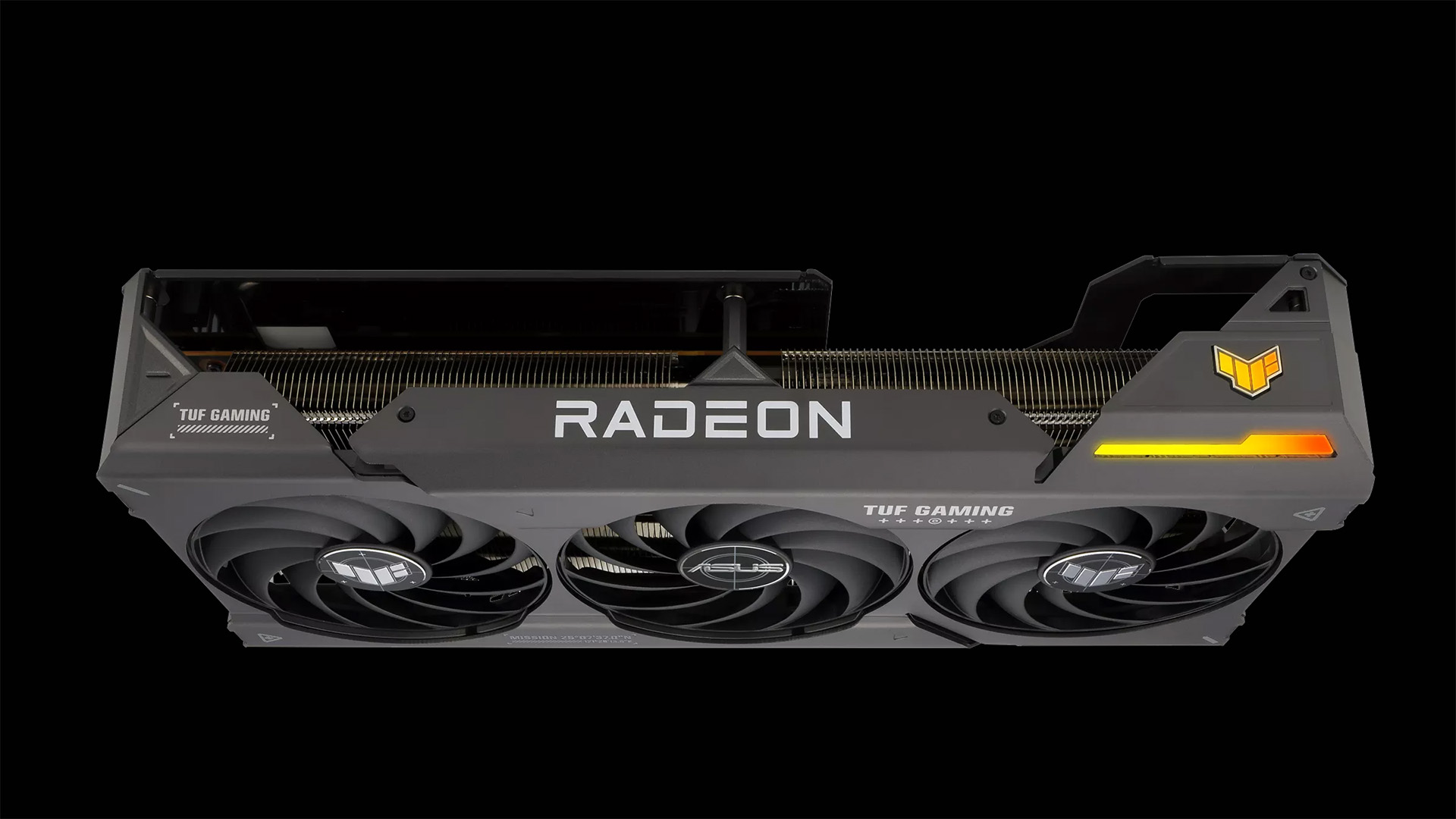

- Asus RX 7900 GRE TUF Gaming for $599.99
- Asus RX 7900 GRE Dual $569.00
Asus has two 7900 GRE SKUs for now, a dual fan and a triple fan option. The triple-fan comes in the form of a TUF Gaming SKU, sporting a 3-slot wide form factor. The card features the brand's military-themed grey color scheme, accented by military text on the shroud, and an RGB TUF gaming logo on the side.
The TUF model also comes with "military-grade capacitors" that are rated for 20,000 hours at 105C to ensure the card can last for years in almost any environment. Similar to the Gigabyte card, the central fan spins in the opposite direction of the outer fans to improve airflow and reduce turbulence. The card requires two 8-pins to operate and boosts up to 2,391MHz in its OC mode.
The Asus Dual is the first RX 7900 GRE in our list that features a dual-fan design. The card is nearly 40mm shorter than the TUF Gaming model (280mm vs 319.8mm), making it noticeably smaller than its triple-fan counterpart. That said, the Asus Dual isn't the most compact dual-slot card you'll find, as its height spills well over the standard height of a PCIe slot. That could be difficult to deal with in some smaller mini-ITX chassis.
Aesthetically the card features a stealthy dark grey and black finish, with no RGB lighting. Despite its smallish size, it also comes with a reinforced metal backplate that adds structural rigidity to the card. A dual BIOS configuration is another feature the Dual includes, with performance and quiet BIOS modes. Power comes from two 8-pin connectors and the GPU clocks up to 2,366MHz in its OC mode.
PowerColor


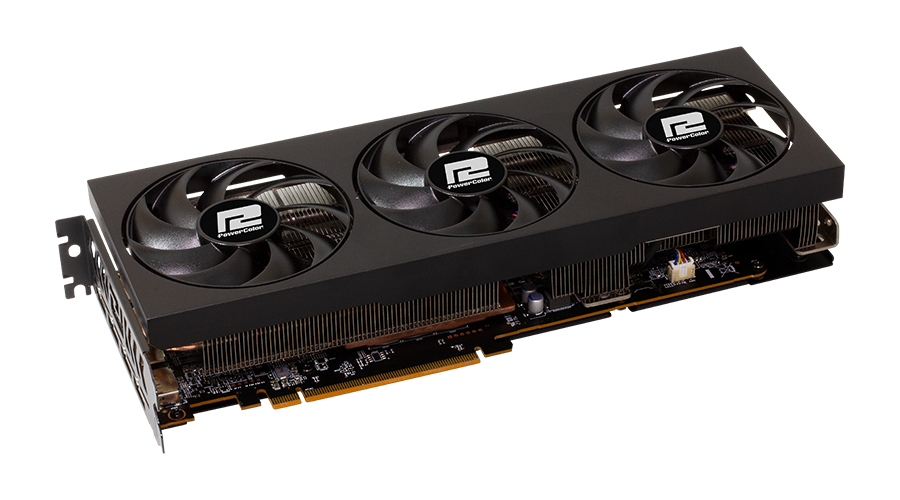
- PowerColor RX 7900 GRE Red Devil (no pricing available)
- PowerColor RX 7900 GRE Hellhound for $579.99
- PowerColor RX 7900 GRE Fighter for $559.99
PowerColor has three triple-fan RX 7900 GRE's for sale, in the usual Red Devil, Hellhound and Fighter variants.
The Red Devil is PowerColor's flagship brand sporting a massive triple-slot, triple-fan cooling solution with dual BIOS functionality and an 11+2+1+2+1 phase VRM design. Cooling is provided by an aluminum heatsink featuring seven nickel-plated copper heatpipes and a direct-contact copper plate for improved thermal dissipation. The Red Devil is one of the most overbuilt 7900 GRE's on our list.
The card comes with a brushed metal shroud and metal backplate, accented by matte-black fans and red LED lighting on the card. Power is provided by two 8-pins and the GPU clocks up to 2,391MHz.
The Hellhound is the manufacturer's mid-tier brand. This model is slightly smaller than the Red Devil but retains the triple-fan cooler design. To accommodate its slightly smaller size, the central fan is smaller than the other two fans. Cooling is provided by an aluminum heatsinks sporting five nickel-plated copper heatpies with a direct-contact GPU copper plate. Dual BIOS functionality is supported, featuring OC and silent profiles. Power is provided though a 9+2+1+2+1 VRM phase design.
The Hellhound features a matte black finish accompanied by LED lighting on the three fans and a triangle on the backplate. The three fans come with frosted fan blades enabling the LEDs to illuminate the fan blades. On the side there's a physical switch to change colors or turn off the lighting — "Ice blue shows coolness and elegance while amethyst represents mystery and charm," according to PowerColor's marketing. Power is again provided by two 8 pins and the GPU clocks up to 2,366MHz.
The Fighter is PowerColor's base model 7900 GRE. It's only 10mm longer than the Asus Dual (290mm vs 280mm) but still manages to include a triple-fan cooler design. The heatsink has been downgraded to just four heatpipes but it still includes a copper base plate that makes direct contact to the GPU. The card comes with a matte black shroud, black fans, and a black reinforced metal backplate, but no LED lighting of any sort. The card needs two 8-pins for power and boosts up to 2,293MHz.
ASRock
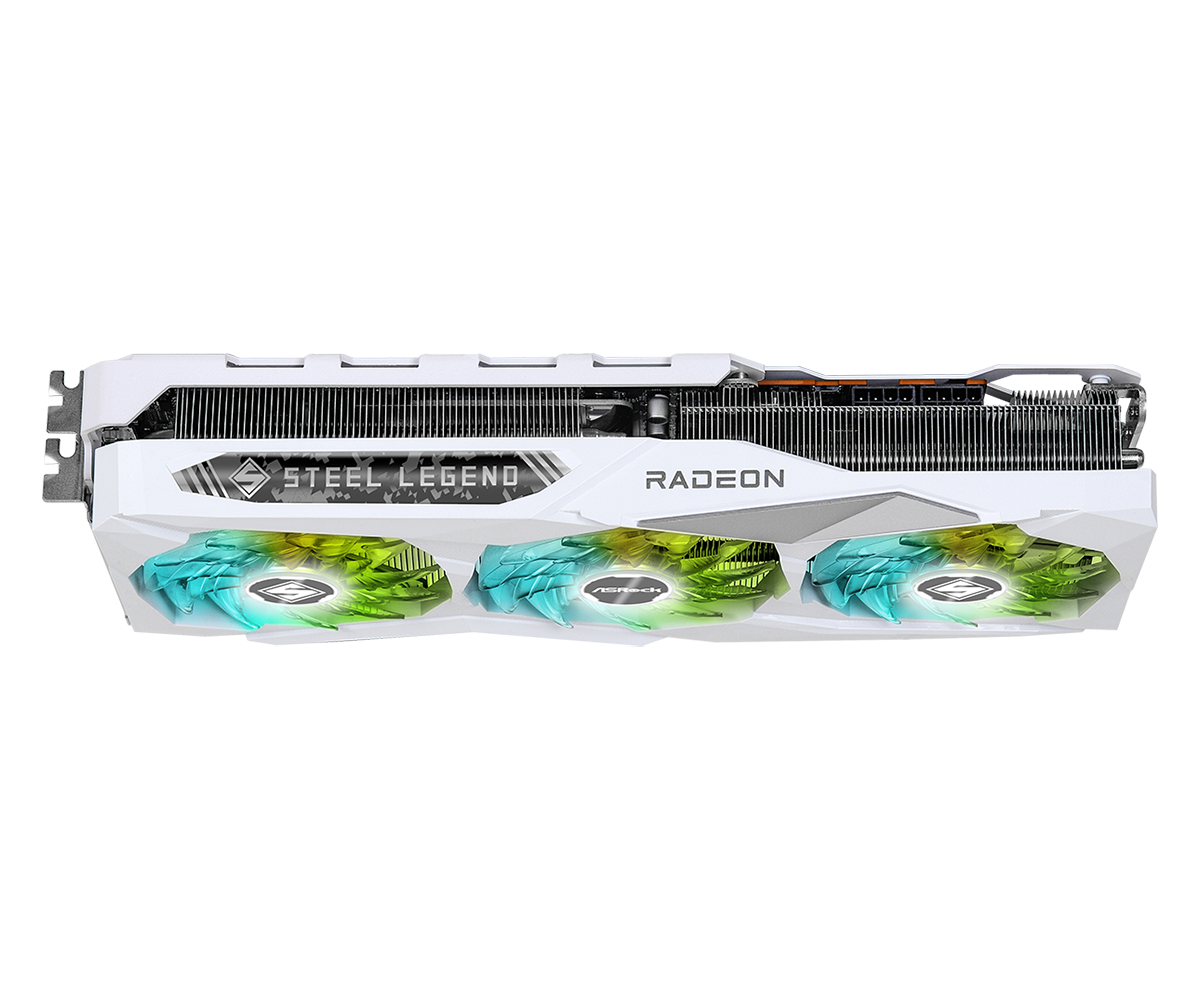
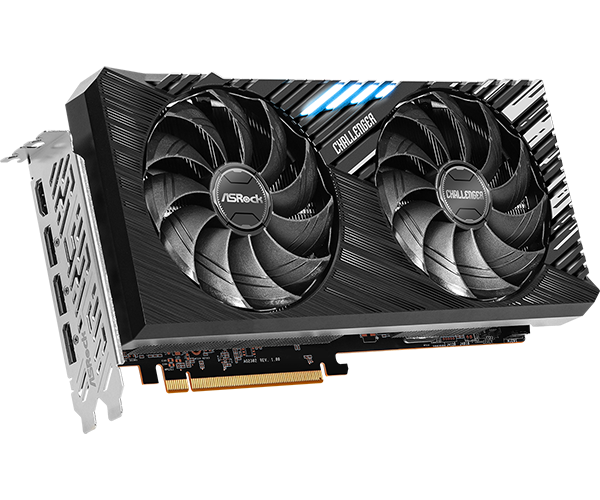
- ASRock RX 7900 GRE Steel Legend for $569.99
- ASRock RX 7900 GRE Challenger for $549.99
ASRock has two models for sale, a triple-fan and a dual-fan model. The triple fan model is the ASRock Steel Legend, sporting a white color theme and three RGB illuminated fans. The heatsink is comprised of five heatpipes that make direct contact to the GPU. The heatsink is designed with V-shaped air vents and V-shaped cuttings to improve airflow dissipation from the fans. The back of the card sports a metal backplate and a metal reinforcement frame on the side to keep the card from flexing. There's also a physical LED switch to turn off the lights. Power is provided through two 8-pins and the GPU boosts up to 2,333Mhz.
The ASRock Challenger is another dual-fan card, with a full black color scheme accompanied by a single RGB accent on the front-top of the shroud. The card is 11mm shorter than the Asus Dual but is quite tall. The card features the same heatpipe design as the Steel Legend but forgoes the V-shaped heatsink architecture in favor of a more standard heatsink design. The back of the card is reinforced by a metal backplate, and power is provided by two 8-pins. The GPU clocks up to 2,293MHz.
XFX
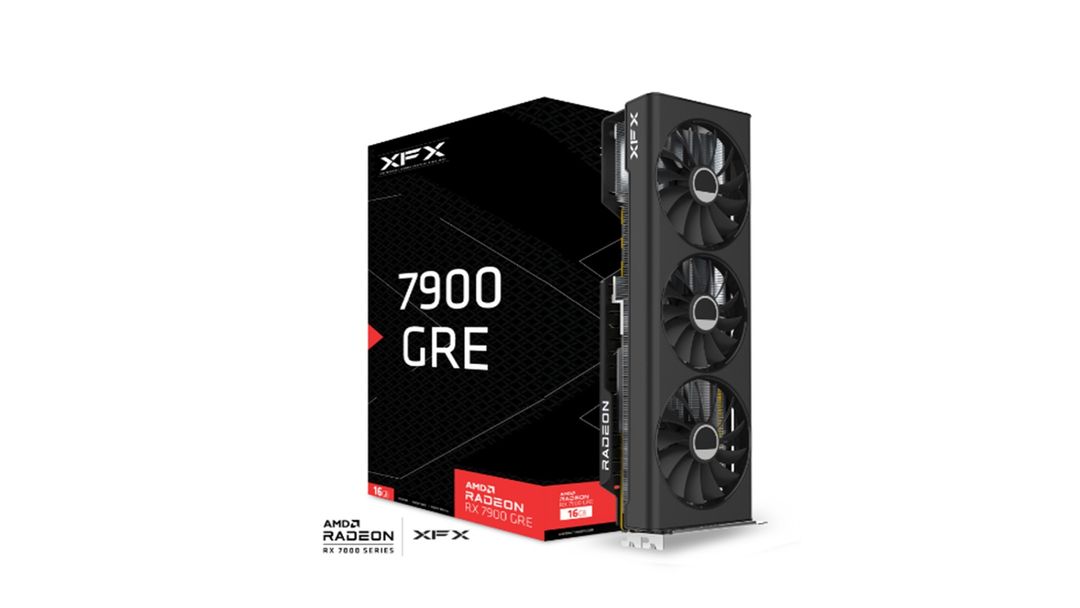
- XFX RX 7900 GRE for $549.99
XFX has two RX 7900 GRE versions on its website, with both models residing under its Merc sub-branding — though interestingly the models are not advertised with the Merc branding, only their model numbers use the name, RX-79GMERCBR and the RX-79GMERCB9.
As far as we can tell, both models are identical despite having different model numbers. The specs of both cards are the same, as well as the cooler and form factor. Both have the same release dates (February 27, 2024), so it's not clear why there are two different model numbers — unless the images are incorrect.
Both models feature XFX's traditional matte-black color scheme and a triple-fan cooling system measuring 335mm long. Each fan features 13-blades that reportedly provide better reliability and efficiency over other designs. Both cards come with dual BIOS functionality but unlike other manufacturers, the secondary BIOS chip exists solely as a backup solution.
The backplate features a fully perforated structure to allow hot air to escape quickly from the rear PCB. Both cards get their power from dual 8-pin connectors and both clock up to 2,395MHz.
Get Tom's Hardware's best news and in-depth reviews, straight to your inbox.

Aaron Klotz is a contributing writer for Tom’s Hardware, covering news related to computer hardware such as CPUs, and graphics cards.